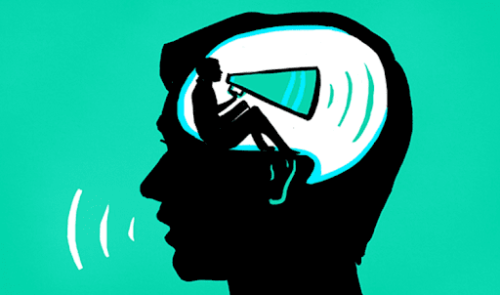
In grade school, I participated, along with classmates, in the annual Presidential Fitness test, a national physical fitness test. President Lyndon Johnson introduced the test in the late 1960s due to the fears that America was becoming “soft” and would not be ready for a potential conflict – namely with Soviet Russia.
I didn’t care about any of that stuff—I only cared about earning the blue patch with a cool eagle that came with passing the test. If I remember correctly, the test required the following: pull-ups (for boys), modified pull-ups (for girls), sit-ups (or sit and reach), a shuttle run, a standing broad jump, a 50-yard dash, and a softball throw for distance. There was also a 600-yard run.
One test was my bane: the pull-up test. I lacked the upper body strength to perform the minimum required number of pull-ups.
As a youngster, I was fast, possessed a decent arm, and had great endurance. Yet when I gazed up at the pull-up bars to start the test, my spirits always sagged. After maturation and increasing my strength, I finally passed the pull-up test in sixth grade, my last year of grade school. The Presidential patch was finally mine!
Even now, we can test physical fitness for military recruits, but what about mental wellness, which I believe is more important? You can train for a run, but how do you train resiliency? You can strengthen your arm, but how can you improve your empathy?
I wish we could standardize tests for mental fitness, helping our youth by improving the most crucial element that will facilitate their success and, most importantly, their happiness in life.
What does it mean to be mentally well? Aren’t we all on some type of continuum as it relates to our mental wellness? Some days, we feel upbeat, seemingly able to take any type of challenge, and other days, just getting out of bed feels like climbing a steep mountain. Yet, I realize that for those who unfortunately have mental health issues, the challenging days far exceed those that seem vibrant.
Your physical fitness and health should be a priority, but you must also emphasize a proactive approach to nurture your mental health and thrive in various aspects of life. Prioritize mental wellness to improve your quality of life, impact how you think, feel, and behave, influence work performance, and enhance physical health.
Let’s unpack mental wellness and explore ways to experience greater fulfillment, resilience, and productivity for a more balanced and satisfied life.
Signs of Good Mental Wellness
Recognizing the signs of good mental wellness is essential for assessing your overall well-being and identifying areas for improvement. Some indicators include:
- Good Self-awareness
- As carved in stone entrance to Apollo’s temple at Delphi in Greece, was γνῶθῐ σεαυτόν, or “Know oneself.”
- Positive mood and emotional stability
- Healthy coping mechanisms
- Effective stress management skills
- Sense of purpose and meaning in life
- Ability to adapt to change and overcome challenges
- Balanced lifestyle
- Adequate sleep, nutrition, and physical activity
Here’s an example of what good mental wellness looks like in daily life:
Sarah sits alone in a bustling cafe, savoring her short lunch break. Suddenly, her phone buzzes with an urgent work e-mail. Despite the looming deadline, Sarah takes a deep breath and calmly assesses the situation. She acknowledges the stress but reframes it as an opportunity to showcase her skills. With a clear mind, Sarah drafts a plan, delegating tasks where necessary. Her ability to navigate pressure with composure and optimism reflects her strong mental wellness.
It is striking how Sarah’s situation mirrors that of many individuals in the workplace. Sometimes, the manager requires immediate action, and in high-stress situations, you must deliver (as I have experienced throughout my career). Employing a solid mental framework, as Sarah does, is crucial for completing the work accurately and on time and maintaining composure.
Signs of Poor Mental Wellness
Despite efforts to promote mental wellness, many struggle with poor mental health, and the side effects can significantly impact their lives. Anxiety, depression, PTSD, and various phobias can influence how someone views, obtains, or maintains mental wellness. Meanwhile, substance use disorders involve impairment in cognitive functioning and emotional regulation.
Signs of poor mental wellness without mental illness or disorder include:
- Lack of motivation
- Persistent sadness or hopelessness
- Increased anxiety or worry
- Fear or nervousness that interferes with daily functioning
- Changes in sleep patterns, restlessness, or oversleeping
- Irritability or angry outbursts
- Social withdrawal or isolation
- Poor concentration or memory
- Difficulty making decisions
- Unexplained physical ailments
- Changes in appetite or weight
- Loss of interest in previously enjoyed activities or hobbies
- Procrastination
- Problems meeting personal, professional, or social obligations
- Feeling overwhelming emotional distress
The above list is certainly long. However, please note that just because you experience one or more of these signs doesn’t mean you have a mental health disorder. However, it may indicate a need for professional support or intervention to address underlying issues and promote holistic mental wellness.
Again, this is where self-awareness and understanding how much of your life is affected (e.g. frequency, intensity, impact on you and others) come into play.
Strategies for Improving Mental Wellness
Mental wellness is the cornerstone of well-being, emotional resilience, psychological balance, and social connectedness. Let’s explore three lifestyle changes, three stress management techniques, and three social connection tips for improving mental wellness from the inside out. I call this the “special 9” for mental wellness.
3 Lifestyle Changes for Mental Wellness
Supportive lifestyle changes include diet and nutrition considerations, exercise and physical activity management, and adequate sleep cycles.
- You need to eat well: Diet and nutrition
What you feed your body has a significant impact on your mental mindset. A balanced diet rich in fruits, vegetables, whole grains, lean proteins, and healthy fats nourishes the body and mind. Meanwhile, omega-3 fatty acids, as found in salmon and other fatty fish and nuts (e.g. walnuts), can also help reduce the symptoms of depression and anxiety. Flaxseeds are also a great source of omega-3 fatty acids. Sprinkle flax seeds on yogurt, for instance, for a healthy snack.
- You need to move: Exercise and physical activity
Regular exercise is a powerful tool for improving mental wellness because it releases endorphins, neurotransmitters that promote feelings of happiness and reduce stress. Aim for at least 30 minutes of moderate-intensity exercise a few days a week. Lift weights, get on a treadmill or bike, or take a rigorous walk (and don’t look at your phone while doing so).
- You need to sleep well: Sleep hygiene
Good sleep is critical for mental health and cognitive function. Maintain a consistent bedtime routine, along with establishing a comfortable environment. Limit exposure to screens before bed (put the iPhone away), skip heavy meals late in the day, and try for 7-9 hours of rest each night.
3 Stress Management Techniques for Mental Wellness
Stress management techniques include customized mindfulness meditation sessions, deep breathing exercises, and tailored time management skills.
- Mindfulness and meditation
Mindfulness is magic, as I like to say. Mindfulness practices cultivate present-moment awareness and reduce stress by focusing on the here and now. Consider mindful breathing, body scans, or loving-kindness meditation to promote relaxation and build resilience.
Body scans involve paying attention to your left foot. How does it feel? Then, slowly moving throughout the body, “scanning” for any pain, tension, or anything else that seems out of the ordinary. This builds a mind-body connection, bringing awareness to the present state, however it may be.
Another meditation technique that I enjoy is Loving Kindness Meditation. During this practice, you sit quietly and slowly repeat these phrases to yourself in your mind: “May I be happy. May I be safe. May I be peaceful.”
Then extend this to anyone you may think of, such as your Mom, saying,
“May Mom be happy. May Mom be safe. May Mom be peaceful.”
Take a moment to contemplate the intention deeply, whether it is for yourself or someone else. This practice can be particularly helpful when directed towards someone who may be causing stress in your life. It doesn’t necessarily have to be limited to friends or family; you can even set an intention for a co-worker, for instance.
This meditation cultivates grace and peace within yourself, as well as extending it to others. After all, isn’t that something we all crave and deserve?
- Deep breathing exercises
No time to meditate? Then perform deep breathing exercises, such as diaphragmatic or progressive muscle relaxation, which activate the body’s easing response and reduce physiological arousal. Regular practice strengthens resilience and improves stress thresholds over time. Take time to “box breathe” -inhaling for 4 seconds, hold the breath for 4 seconds, exhale for 4 seconds, hold the breath for 4 seconds, and start the sequence again. Complete the cycle 4 to 6 times.
- Time management strategies
Planning ahead is essential for avoiding anxiety and stress. My stress levels rise when I procrastinate, so I am sure to avoid this habit. Effective time management helps reduce feelings of overwhelm and enhances productivity by helping prioritize tasks based on importance and urgency while breaking larger tasks into smaller, manageable steps.
3 Social Connection Tips for Mental Wellness
Mental wellness requires a social component involving supportive relationships, public interactions, and opportunities to give back.
- Build supportive relationships
Strong social support networks provide emotional validation, practical assistance, and a sense of belonging. Prioritize quality time with loved ones, engage in open conversation, and express gratitude when possible. We are not islands. By sharing with others, we provide an outlet to our myriad of emotions and experiences and build the “connective tissue” of our shared humanity.
- Join clubs or groups
Whether joining a book club, sports team, or hobby group, participating in shared experiences creates opportunities for camaraderie, shared interests, mutual support, and improved mental wellness. Seek regular interactions with like-minded people.
- Volunteer or help others
This is one of my favorite tips for facilitating well-being. Giving to those in need drives fulfillment of a greater purpose. By aiding others, you simultaneously aid yourself, as the act of giving elevates the overall happiness and satisfaction of the giver. I actively participate in the Meals on Wheels program, which delivers meals to elderly individuals who cannot leave their homes. This experience has enriched my life in numerous ways.
Incorporate the above “special 9” tips mentioned into a new way of life that prioritizes mental and emotional health. Then, use the science-backed tips in the next section to build new hobbies, interests, goals, values, and perspectives.
Creative Ways to Cultivate Mental Wellness
In addition to traditional approaches to mental wellness, creative activities can offer unique avenues for self-expression, relaxation, and emotional healing. Explore creative outlets that can enhance your mental well-being and promote a sense of joy and fulfillment, even in the mundane.
Need some ideas? Let’s explore five creative tips to nurture wellness.
#1. Art Therapy
“Art washes away from the soul the dust of everyday life.” – Pablo Picasso
Tap into your subconscious thoughts and emotions while gathering insights into the inner world. Artistic activities, such as drawing, painting, sculpting, or collage making, provide an outlet for creativity and artistic expression. Whether creating abstract pieces or realistic portraits, art can be therapeutic and cathartic.
Art therapy also encourages people to express and process their emotions visually. Using colors, shapes, and symbols, individuals can externalize their inner experiences to facilitate emotional release and profound insight.
Creative expression has so many benefits, such as reducing stress and anxiety, enhancing problem-solving abilities, and building emotional resilience.
#2. Nature Therapy
“Nature is the art of God.” -Dante Alighieri
The above quote from Dante Alighieri, an Italian Poet of the Middle Ages, points out that, like an expression of art, the beauty of nature is also a divine instrument given to us for our wellness.
Take time to spend outdoors. Spending time outdoors and in natural environments can have profound benefit for mental wellness. Immersing yourself in nature allows for a break from the demands of daily life and promotes relaxation, stress reduction, and a connection to your higher self.
The connection between nature and mental wellness is well-documented. Time in nature is linked to improved mood, relaxation, psychological restoration, and overall well-being. Whether strolling in the park, hiking in the mountains, or star gazing under the night sky (one of my favorites, as I’ll attest in a future blog post). All of these activities benefit mind, body and spirit.
#3. Music Therapy
“Do you know that your soul is composed of harmony?” – Leonardo da Vinci
I have a deep passion for music. Music taps into the soul’s harmonies- bringing forth the inner reservoir of joy, hope and life. This is one of my favorites, from Italian composer, Ludovico Einaudi, titled Divenire, meaning “to become” in Italian. You can access the song here,. Listening to it is metaphorically like soaring with eagles soaring among the mountain tops, powered by the ebbs and flows of the wind currents. Magnificent!
To visualize success, you can use a song like Divenire. Simply play the song and reflect upon those moments in your life when you experienced true happiness or performed at your very best. Allow the music to resonate deeply within you, igniting a profound realization of your boundless potential.
Incorporate music into daily routines, such as during meditation, while working, as you exercise, or before bedtime, to enhance mental wellness and promote healing. Certain types of music can activate the brain’s reward pathways, releasing feel-good neurotransmitters like dopamine and serotonin.
#4. Laughter Therapy
Abraham Lincoln, despite experiencing numerous tragedies throughout his life, such as the untimely loss of his mother, the heart-wrenching loss of two of his children, and the daunting responsibility of overseeing a brutal Civil War, found solace in humor. Lincoln had a deep affection for one-liners and jokes, often using self-deprecating humor to lighten the mood. It was not uncommon for him to kick off cabinet meetings by sharing a passage from one of his beloved humorists.
On one instance, when those in the meeting didn’t seem to appreciate the humor, Lincoln said, “Gentlemen, why don’t you laugh? With the fearful strain that is upon me night and day, if I did not laugh occasionally, I should die, and you need this medicine as much as I do.” I can picture those around him rolling their eyes as soon as a joke began, just like when I tell a “Dad joke” at home. However, Lincoln needed to break the solemn atmosphere.
My wife and I share a fondness for watching comedies, as they can bring out our laughter. It is something we both enjoy and find necessary in our lives. It is said that laughter is the best medicine, and for enhancing mental wellness, it might be true. Watching comedy shows or movies that include laughter can immediately relieve stress, boost mood, and promote well-being.!
Try watching stand-up comedy, sitcoms, or funny movies to reap the numerous physical and psychological benefits. Physically, laughter stimulates circulation, oxygenates the body, and relaxes the muscles. Psychologically, it reduces stress hormones, such as cortisol and adrenaline, while increasing endorphins and serotonin to elevate moods, and foster social connections.
#5. Writing Therapy
Journaling can have tremendous benefits for mental wellness. Writing therapy involves journaling for self-reflection, exploration, emotional processing, and personal fulfillment. By putting pen to paper, you can externalize thoughts, feelings, and experiences. The act of journaling has helped me during many stressful times in my life, providing additional clarity and insights into how I was feeling.
Journaling promotes self-awareness, self-expression, and self-compassion, fostering emotional healing and personal growth. Creative writing exercises help you tap into your imagination and creativity, allowing you to escape from reality, even if only temporarily.
Writing therapy flexes your cognitive muscles, helping to process trauma, grief, or complex thoughts and emotions. Therapeutic writing exercises provide a safe outlet for exploring painful experiences, releasing emotional burdens, and finding meaning in adversity.
Common Mental Wellness Obstacles
Pursuing mental wellness has become increasingly vital…and challenging in today’s fast-paced world. It’s easy to encounter obstacles that impede your journey towards optimal well-being. From societal stigmas to personal hurdles, navigating requires proactive strategies and open-mindedness. Here are a few that might act as speedbumps:
- Negative attitudes and stereotypes around mental health
- Limited knowledge about mental health conditions and available resources
- Feeling lonely or being socially withdrawn
- Relying on unhealthy coping mechanisms, such as substances or self-harm
- Limited financial resources
- Work-related stress, pressure, or burnout
- Trauma, abuse, or neglect
- Resurgence of traumatic memories
Conclusion
Improving mental wellness is not always easy, but it is undoubtedly worthwhile. It’s a journey of self-discovery, growth, and empowerment. By embracing challenges, seeking opportunities, and nurturing a compassionate relationship with yourself, you can cultivate lasting mental wellness and live a fulfilling life.
Invest in self-care, seek support when needed, and foster healthy coping mechanisms that nurture your mental well-being and build resilience despite life’s hurdles.
Learn what mental wellness is and isn’t, how it manifests in daily life, and ways to enhance your emotional resilience. Seek proactive strategies to overcome obstacles and become the best version of yourself possible. Begin this journey with enough courage, compassion, and determination to carry you across any finish line.




